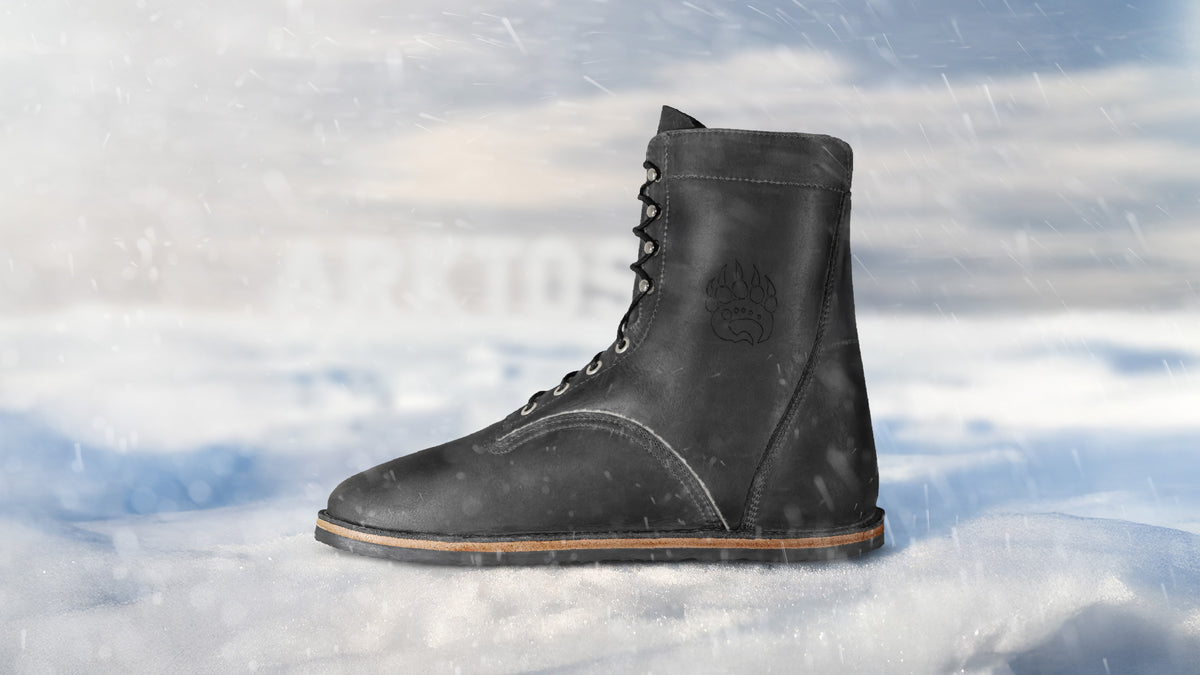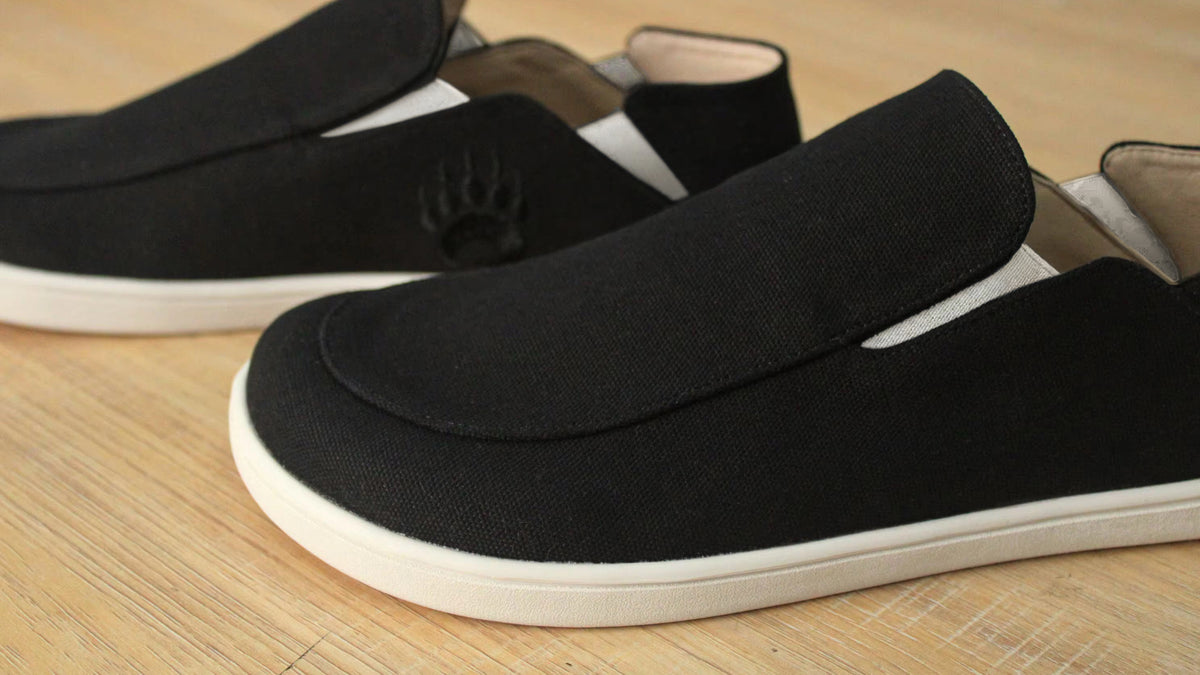Flat Feet vs. High Arch
Written By: John Baker and Lily Hoog-Fry
Have you ever heard of the arches of your foot and have yet to really know exactly what they are? Well, this will be a lot of great info for you!
If you have ever thought about the role of your feet, it has probably led you to think about ‘the arch’ of your foot. The truth is, there are three arches per foot, which are essential for providing support, stability, and shock absorption to the feet.
Sit back as we dive deeper into what the arches of the foot are made of and how that determines your foot function.
Full disclosure, there are a lot of big anatomy names in the following few paragraphs. You don’t have to understand where each structure goes. It’s more for your reference and to show how many structures contribute to our seemingly simple feet.
What are Arches?
Foot arches are musculotendinous structures. We each have (or at least we were designed to have) two arches that run lengthwise down each of our feet (the medial latitudinal arch and the lateral longitudinal arch, commonly referred to as the medial and lateral arches), as well as one arch that spans across our foot from side to side.
These arches are formed via complex interactions between the bones, ligaments, and muscles of the foot and lower leg. The bones set the general shape but require the pull of ligaments, tendons, and muscles to lift the arch into the proper shape. When all of these components are working in concert, and the arches are functioning as designed, the arches distribute the body’s weight evenly across the feet and allow the foot to come into balance with our center of mass, gravity, and the ground.
This is crucial because, as we have discussed in previous articles, all the upstream bones, tendons, ligaments, and muscles orient themselves in a dynamic balancing act starting at the base of the foot. When our feet are unstable and off-balance, the rest of the body has to compensate, and we are left with suboptimal posture and movement patterns.
In short, the arches set the stage for EVERYTHING!
The Three Arches:
1. The Medial Arch:
The medial arch runs along the inside of the foot. It involves the calcaneus (common starting spot of the longitudinal arches), talus, navicular, all three of the cuneiforms, and the first, second, and third metatarsals.
From a boney perspective, the medial arch makes up the middle ⅗ of the foot lengthwise. Muscularly, this arch comprises flexor hallucis longus, flexor digitorum longus, abductor hallucis, flexor digitorum brevis, and the tendons of peroneus longus, tibialis posterior and tibialis anterior. And last but not least, the medial arch is composed of the plantar aponeurosis, the spring ligament, the talocalcaneal ligaments, and the anterior fibers of the deltoid ligament.
All these big words are to let you know that the medial arch is an intricate weave of structures that runs along the inner half of the foot.
The medial arch is the most known arch and is commonly what people are referring to when they inappropriately refer to the foot as a uni-arch structure. The medial arch should be the most prominent, highest, and strongest of the three arches.
Its complex design allows for there to be a unique and dynamic balance between elasticity and rigidity. This strength and height allow the medial arch to take the bulk of the responsibility when tasked with shock absorption during weight-bearing activities and functions to support your body, much like the suspension and shocks on your car.
If your medial arch is too flattened or weak, it can cause some issues, which we will discuss later.
2. The Lateral Arch:
The lateral arch of the foot is on the outside of the foot. Like the medial arch, the lateral arch starts at the heel of the foot or the calcaneus. From the heel, the lateral arch incorporates the remaining bones of the foot that are not involved in the medial arch – the cuboid and the fourth and fifth metatarsals. Muscularly the lateral arch comprises the fibularis longus, abductor digiti minimi, lateral half of flexor digitorum brevis, fibularis brevis, fibularis tertius. These muscles are then supported by the plantar aponeurosis, long plantar ligament, and the plantar calcaneocuboid ligament.
The lateral arch is noticeably shorter and stiffer than the medial arch, allowing for less vertical displacement and movement. This means the lateral arch does not share the same unique degree of balance between elasticity and stability as the medial arch.
Therefore, it is much better suited for stability than shock absorption. Its proximity to the ground also works to this end, creating more surface tension and contact to the surface we move on.
3. The Transverse Arch:
The transverse arch runs somewhat obliquely and perpendicular to the other two arches, effectively creating a transition point between the midfoot and the forefoot. You can think of the transverse arch as a stirrup.
The transverse arch comprises the bones in the middle of the foot – all five metatarsal bones, the cuboid (laterally), and the three cuneiforms (medially). The transverse arch is much less muscularly and ligamentously endowed than the other two arches, and is made up of the adductor hallucis, the peroneus longus tendon (which stretches across the foot from lateral to medial), and the tibialis posterior tendon (which extends across the foot from medial to lateral). The transverse arch is then further supported by deep, transverse metatarsal, dorsal, and plantar ligaments.
Although the transverse arch may seem dinkier than the other two arches, it is quite a force to be reckoned with. The transverse arch gives our midfoot fluidity, allows us to accommodate the flexibility and stiffness needed for gait, and helps shape the other two arches.
For example, when walking we have what is called the stance phase (when your foot is on the ground) and the swing phase (when your foot is swinging forward).
At the beginning of the stance phase, the midfoot has to be loose and pliable to allow the foot to conform to whatever surface it is about to land on. However, as you shift forwards onto your toes as you continue your step, your transverse arch transforms the midfoot.
As the transverse arch tightens, it reshapes and tenses both longitudinal arches and turns the once flexible and yielding foot into a super stiff spring-like lever to propel us forward. This transformation is vital for maintaining our speed and momentum and drastically improves our energy efficiency when walking.
Two Arch Types:
1. Low Arch or Flat Feet:
Flat feet often result from dysfunctional medial arch tension (although some people have structural or bony abnormalities, which is where orthotics do come into good use). A flat arch is usually flexible, allowing it to look like a functional arch when it is not weight-bearing (e.g., sitting or lying down).
However, once a load is placed on the foot, the arch flattens out, and the foot becomes fully in contact with the ground. This foot type has decreased shock absorption capabilities, and the supporting ligaments (mentioned above in some anatomy-dense paragraphs!) become more stretched and weak over time.
When moving, a flat arch causes the foot to roll inwards (pronation), which pulls the knee inwards as well, and can place undue stress on the medial structures of the knee. When the knee moves inwards, it changes how the musculature on the front and back of the thigh are oriented, altering their efficiency and force production. Not to mention, the medial compartment of the knee is already where we get joint degeneration first.
The lack of strength in the medial arch also causes some big issues in gait. The lack of arch will change how the foot rotates from when your heel strikes to toe-off, and essentially creates a shorter lever arm for us to generate propulsion when taking a step.
If you’re familiar with any sort of manual labor and handy work, you probably learned early on that a longer lever arm meant that you could produce more force with less work. As you may have guessed, we must work harder to move.
Unfortunately, a shorter lever arm also means less load distribution which increases the load on foot and lower leg (in a bad way).
2. High Arch:
A high arch is formed when the muscles that supinate/invert the foot are too tight in relation to the muscles that evert the foot. This causes the arch to be abnormally stiff, inwardly rotated, and curved. This rigidly lifts the metatarsal bones from the ground and bunches them up, increasing the foot's stiffness and decreasing its load tolerance and resiliency. Over time, this can result in aches and pain and stress-related injuries.
When the arch is too high, it rocks our weight laterally, decreasing our ability to distribute load across the medial and transverse arches. Not only does this result in a less friendly interaction between you and the ground, but it also decreases the amount of surface area you have in contact with the ground (which increases the load on the part you do have on the ground). After all, walking across a bunch of nails is fine, but one nail is terrible.
In upcoming articles, we will discuss specific things that can be done to remedy these high versus low issues.
How to Help Your Arches:
Until we have time to go down the rabbit holes of different foot presentations and what you can do about it, here are some tips to help you maintain some healthy arches:
-
Go barefoot where you can:
-
If you’re one of those people that wear shoes inside your house, stop! Let those bad boys out!
-
Even if you can only get them out of your shoes for a few minutes a day at work, that is great! Just let your feet interact with something other than the inside of your sock inside of your shoe.
-
Going barefoot helps build up your calluses and your foot’s resiliency. Start small, eventually your feet will become capable of amazing things!
-
Wear Bearfoot shoes: It is important to shelter your feet in high-quality shoes that allow for flexible, natural, and biomechanically sound movement.
-
Have a foot care regiment:
-
Roll those feet out! Strive for 2 minutes a day. It will change the fascia of your whole body!
-
Stretch your ankles (as we discussed before, lower leg muscles attach to the feet!
-
Foot Love! Just stick your fingers between your toes and get to lovin!
-
Self-Massage: Get out the lotion and start massaging your feet. Have fun, play around, and you’ll find where your attention is needed.
Conclusion:
The arches of your feet are vital in providing support, stability, shock absorption, and comfort to your life. Maintaining healthy and functional arches is paramount for optimal wellness, performance, and injury prevention. Take care of your feet, and they’ll support you in everything you do.



